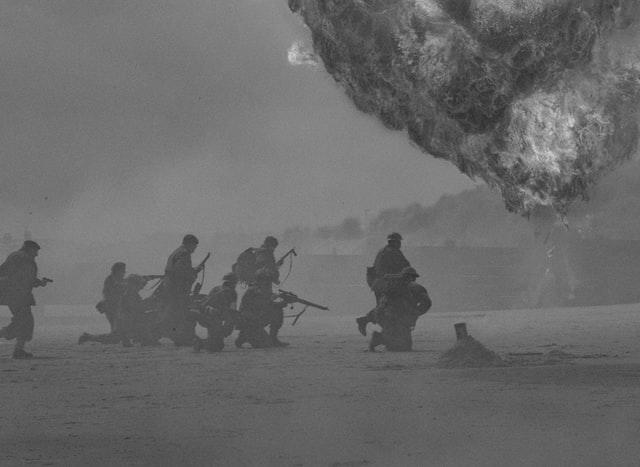It's amazing how so many people act as though every significant event happens in a vacuum, completely isolated and independent of every other event that preceded it. For instance, most people contend that the September 11th, 2001, attack on the United States was unprovoked and out of the blue.
The seeds for that attack were planted 22 years before when the Soviet Union invaded Afghanistan. That was when a very young Osama bin Laden became indoctrinated into the school of thought that led him to issue his first fatwa (decree) in 1996, which called for the US military to leave Saudi Arabia.
The effects of that single September 2001 event were profound, causing global economic uncertainty, massive geopolitical shifts and two wars, one of which ended just last year. And they prove the risks of missing critical perspectives when seeing cataclysms like 9-11 as disconnected from the chain of events that preceded them.
There seems to be a similar vacuum regarding the start of the Second World War. The common narrative goes: Nazis gained power, Hitler wanted to rule the world, he started in Poland...
But the rise of Nazism didn't just happen. If it hadn't been for a profound economic shockwave on another continent, perhaps Herr Hitler would have never gained a foothold.
That shockwave was the Great Depression; the circumstances leading to that event should be a cautionary tale for us today.
| Events that led to the Great Depression: |
|---|
| - Distress selling of assets and debt liquidation due to over-indebtedness. |
| - Bank loans are paid off; money supply contracts. |
| - Asset prices drop because supply is greater than demand. |
| - Business net worths fall, provoking large-scale bankruptcies. |
| - A reduction in employment leads to a drop in production and trade. |
| - A dramatic drop in profits across the board. |
| - Drops lead to a loss of confidence; pessimism sets in. |
| - People who have money start hoarding it. |
| - A drop in nominal interest rates coupled with a rise in deflation-adjusted interest rates. |
As ominous as they are considering where we're at, economics-wise, even these indicators don't tell the whole Great Depression story. What caused the over-indebtedness and deflation? Let's do some root cause analysis to get to the bottom.

The Ravages of the Great Depression
The initial onslaught of the depression, spanning from 1929 to 1933, cast a long shadow over the global economy. Industries, once vibrant symbols of progress, now stood as ghostly reminders of economic fragility. Businesses crumbled, factories fell silent, and unemployment rates soared, leaving communities grappling with the harsh realities of financial destitution.
The ravages of the great depression encapsulate more than financial hardship. It is a poignant chapter in history that illuminates the intricate interplay between economic forces and the human spirit. As we delve into its nuances, we will unravel the multifaceted dimensions, from the abyss of economic turmoil to the resilient threads that wove through the fabric of society.
Unveiling Economic Despair and Social Strife
In the aftermath of the stock market crash of 1929, the world was plunged into an unprecedented era of hardship, encapsulated by the great depression. The stock market, once a symbol of prosperity, became a harbinger of economic devastation, leading to widespread unemployment, poverty, and despair.
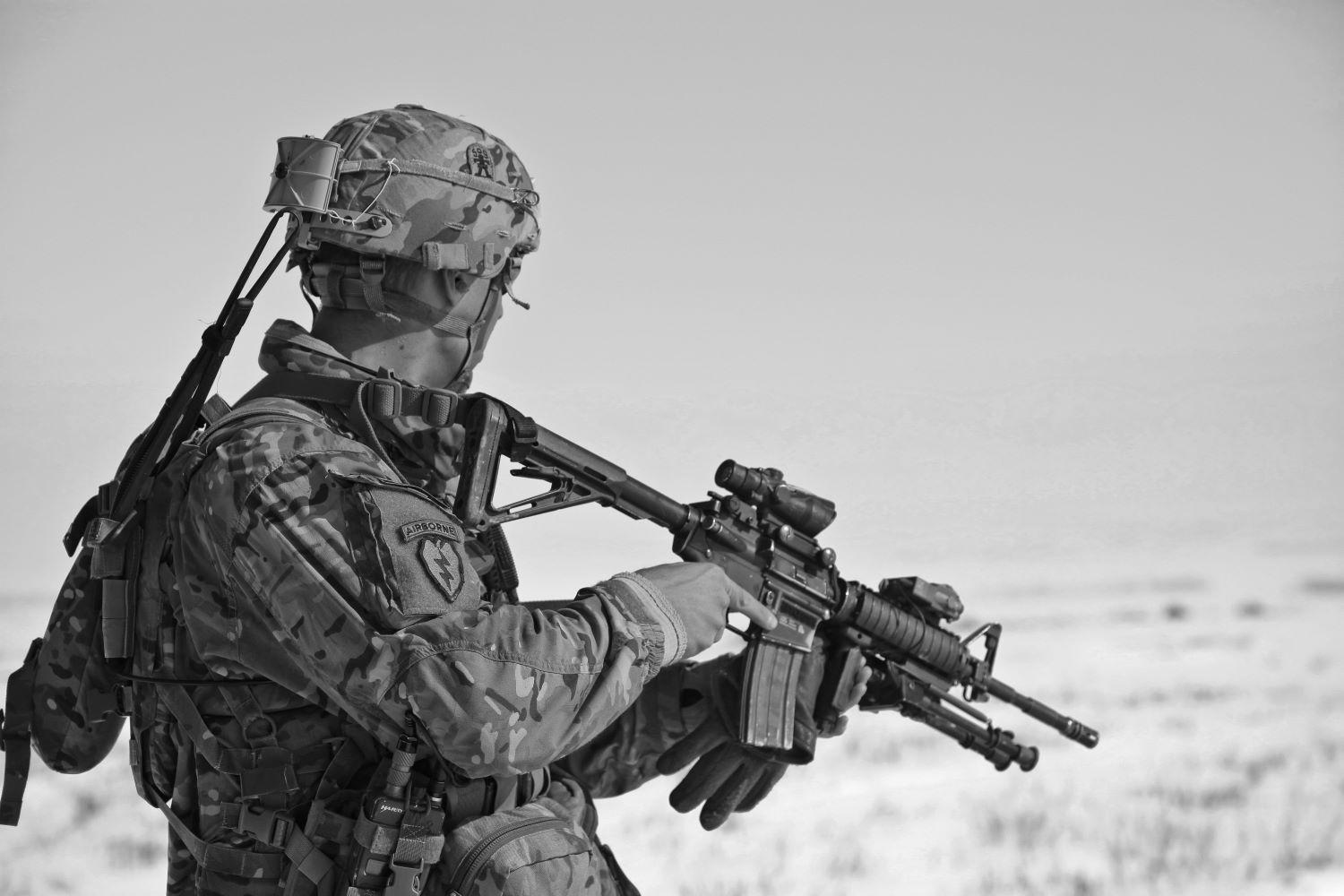
Enter the Abyss: Economic Turmoil
The early years of the great depression witnessed a precipitous decline in economic indicators as businesses crumbled and unemployment soared. The once-vibrant industries faced unprecedented setbacks, with factories closing their doors and agricultural communities grappling with falling crop prices.
Desperation permeated the air as families struggled to make ends meet, and breadlines became a stark manifestation of the economic free fall. However, amidst the financial chaos, resilience emerged. Local communities rallied together, creating makeshift support systems to weather the storm. Soup kitchens, organized by charitable initiatives, provided sustenance to the hungry, exemplifying the human capacity for compassion amid adversity.
Social Unrest and Cultural Impact
As the Depression persisted, social unrest took center stage. The societal fabric was strained under the weight of economic turmoil, leading to protests and movements demanding change. Workers united in labor strikes, advocating for fair wages and improved working conditions. The cultural landscape also bore witness to transformation, with art and literature reflecting the prevailing sense of disillusionment and yearning for a better future.
Rising Tension: Prelude to Global Conflict
As we delve into the early tensions, you will witness a delicate dance between economic recovery, nationalism, and militarization, creating an atmosphere ripe for conflict. This narrative unfolds through the lens of economic struggles, militarization trends, and the ideological fault lines that characterized this unpalatable event in the 1930s.
In the tumultuous wake of the great depression, the 1930s emerged as a crucible of rising tensions, laying the groundwork for a seismic global shift. This era, explored in this part of this article, unveils a complex geopolitical landscape marked by the interplay of power dynamics, territorial ambitions, and ideological clashes.
Economic Struggles and Nationalism: A Precarious Balance (1930-1935)
The aftermath of the great depression left nations grappling not only with economic hardships but also with a sense of vulnerability. In the quest for stability and rejuvenation, a surge of nationalism swept across countries, fueling aspirations of self-sufficiency and resilience. However, this surge also sowed the seeds of international discord as nations sought to assert their interests in an increasingly interconnected world.
Militarization and Rearmament (1935-1938)
Amidst the growing geopolitical tension, the 1930s witnessed a troubling trend: the militarization and rearmament of nations. Faced with perceived threats and a shifting balance of power, countries embarked on extensive military buildups. The ominous hum of war machinery echoed through landscapes, signalling an ominous prelude to the impending global conflict.
Ideological Fault Lines: Fascism, Communism, and Democracies (1938-1939)
The ideological fault lines that defined the era became increasingly pronounced in the late 1930s. The rise of fascist regimes, the spread of communism, and the resilience of democratic ideals created a volatile mix. The clash of these ideologies set the stage for the imminent confrontation that would erupt into the cataclysmic event of World War II.
What Caused the Great Depression
War is big business. It's a nasty business, too, but one that creates heroes and mints millionaires seemingly overnight. Aren't heroes and millionaires what nations build their legends on? They must be because the rich and heroic are usually the parts of war we focus on.
In the run-up to the Great Depression, they were the only ones that mattered. They, and the so-called Spanish flu pandemic.
Find a good Economics class here.
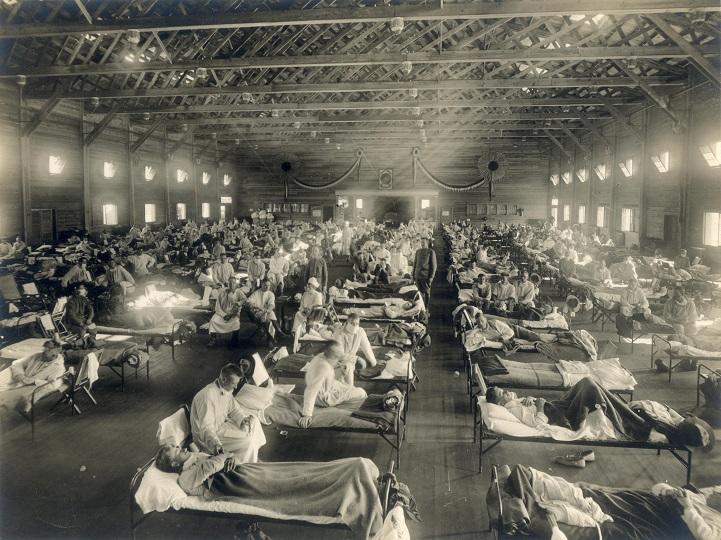
The end of the First World War coincided with the start of the influenza pandemic. Even though American soldiers didn't join in the fighting until the war's last year, it was a very long year on the home front and rather than revelling in soldiers' return, people had to buckle down and stay away from one another.
We know what battling a pandemic feels like, don't we?
The pandemic caused an economic downturn (as it did in our time) so, as it waned, the US president was keen to kickstart the economy. Thus, the Roaring Twenties. Industry ground into high gear, mass-producing such luxuries as refrigerators, wireless radios and automobiles, all priced cheap enough for everyone to buy. And they all did, even if they had to buy on credit.
In that glut of riches and triumphant feeling, robber barons saw their path forward.
The United States had social programmes in place back then and laws to prevent financial trickery. However, the country's expansive mood, coupled with the president's desire to further grow the economy, allowed tycoons to press for advantage. They persuaded legislators to repeal restrictive financial laws and minimise social welfare programmes.
Soon, they had access to all capital and used it to enrich themselves. Does any of this feel familiar? It should. These happenings are the same that led to the 2008 economic downturn.

What Was Happening in Germany?
Germany wasn't exactly under sanctions, but they did have substantial war reparations to pay. So high were these penalties that Germany, already edging toward insolvency, came to a point when they no longer pay them. The US, by then the world's dominant economic power, saw an opportunity.
Those legislators drafted the Dawes Plan, which allowed American tycoons to invest in Germany via Wall Street financial institutions. Germany used that money to repay the UK and other Allied powers. Those countries then repaid the US government for their post-war loans. The event became a giant money-recycling machine, with the US profiting at both ends.
The Dawes Plan afforded Germany a five-year interlude to enjoy their version of the Roaring Twenties, the Golden Twenties.
Meanwhile, in the US, all the cars and appliances that could be bought had been. At that time, people did not own more than one car unless they were very rich, and what could an ordinary household do with more than one refrigerator? Sales started dropping off, but speculation in financial markets ran rampant. After so many boom years, who could blame them?
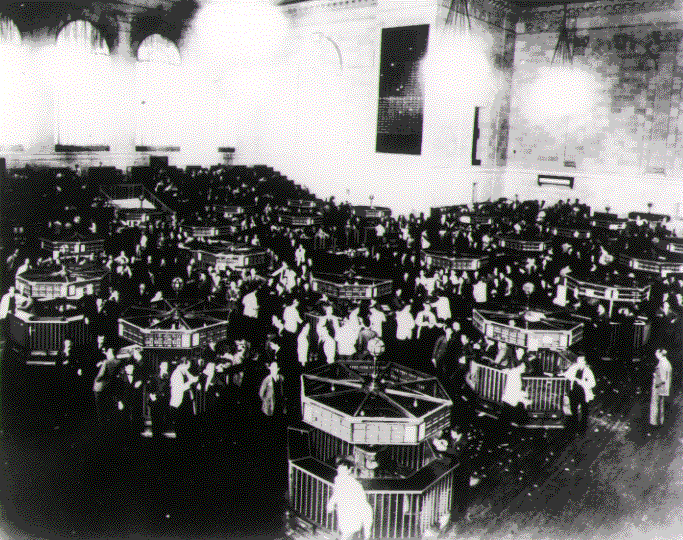
The first market quake happened in March 1929 when investors started feverishly selling off stock. That slide was stopped when one banker announced a $25 million guarantee against losses. Now reassured, stock trading continued at its former pitch, even as the industry declined and consumers were drowning in debt.
The US stock market boom finally ended in September of that year. Even then, investors believed that the tailspin start was just the markets correcting themselves; they continued inflating speculative bubbles. The London Stock Exchange crash on September 20th ended all illusions of market stability.
Investors pulled out of international markets, which left the fledgling German economy suddenly with no support. To make matters worse, American creditors started calling in markers made to European nations, leaving them virtually bankrupt. Inflation started to soar, and with trade under pressure from the United States Smoot-Hawley Tariff Act, there were fewer commodities - grains and such, to buy.
Broke, hungry and humiliated (thanks to the Treaty of Versailles) on the world stage, the mood in Weimar Germany turned ugly and desperate. The people were primed for an autocratic leader like Adolf Hitler, who knew all the right things to say - soundbites to stoke anger and division and all the right promises to make of prosperity and destiny.
His playbook wasn't so different from the one used by some of today's leaders.
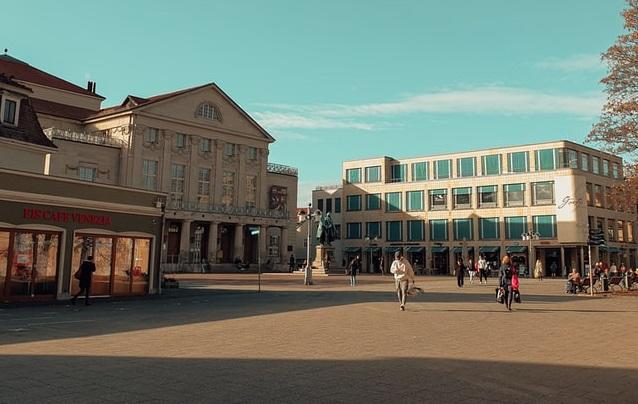
The Parallels With the War in Ukraine
Looking back over the past 35 years, it's easy to recognise the patterns and actions that led to the Great Depression, which, as we now know, led to the Second World War.
- Starting in the mid-80s, the United States enjoyed remarkable prosperity; the wealth was shared (to varying degrees) around the world when the Iron Curtain fell in 1989.
- In the 1990s, the US government repealed the Glass-Stegall Act, a law enacted in the aftermath of the Great Depression that mandated the separation of commercial and individual banking. Removing the partition between them gave investors access to huge troves of cash previously unavailable to them.
- The 2010 Supreme Court decision in Citizens United v. FEC essentially designated corporations as people, giving corporations undue influence over the government.
- The 2018 repeal of the Frank-Dodd Act, a series of financial system regulatory reforms, removed virtually all of the safeguards from Wall Street, once again permitting the same type of speculative bubble creation that brought about the Great Depression and the 2008 global recession.
- Starting in 2020, the coronavirus pandemic took its toll on individual countries' economies, which caused instability in the global economy.
Few economies made it through the pandemic unscathed. In terms of real GDP growth, Russia fared worse than the United States, but neither economy was doing well. And the US had removed all the checkpoints safeguarding its economy.
By August 2020, Russia's economy had contracted by 8.5% and only has attained weak to moderate growth since then. Furthermore, that country's government has been labouring under a list of sanctions, some levied as far back as 2014 when Russia annexed the Crimean peninsula.
Russia has a lot of potential assets, but turning them into worth would take staggering amounts of money. All of the mines, logging forests, and even their access to open water are all on the eastern end of the country, but industry and civilization are mostly all at the western end.
Even the country's oligarchs likely wouldn't care to relocate closer to their diamond mines and oil fields.
Their one easily accessible asset, gas, is essentially their cash cow, but those reserves are under heavy sanctions, too.
By contrast, Ukraine is known as the world's breadbasket. That country exports grains all over the world and has plenty of other riches. And most importantly, it has access to open water.
And now, we come back to our starting premise: that earth-shattering events do not happen in a vacuum.
Last year, Russia quietly issued passports to residents of Ukraine's Donbas region, giving that government a legitimate claim to defend Russian citizens living in Ukraine. Apparently, they expected a quick victory, after which they could claim Ukraine's riches and use them to prop up their economy. That could allow Russia to finally surpass America's distressed economy.
Thus, the Russian people would never feel broke, hungry and humiliated, as Weimar Germans did all those years ago. Was that Mr Putin's motive for the attack? If so, it may backfire.
Now, discover how the war in Ukraine is rattling the global economy.
Turning Points: Events Leading to the World War II
As we navigate through the turning points leading to the outbreak of World War II, expansionist manoeuvres, diplomatic failures, and strategic alliances become the threads weaving the narrative. The unchecked territorial ambitions of nations, symbolized by Anschluss and the Sudetenland Crisis, laid the groundwork.
The ominous signing of the Molotov-Ribbentrop Pact shifted the geopolitical landscape, culminating in the invasion of Poland. In the wake of these events, the world stood at the precipice of a global conflict, and the decisions made during these critical moments would echo through history.
In the crucible of the 1930s, the tensions soon evolved into a landscape fraught with pivotal turning points that inexorably led to the outbreak of World War II.
The sequence of events during this tumultuous period shaped the destiny of nations, setting the stage for one of the darkest chapters in human history. In this part of this article, events that led to the outbreak of the second global conflict are discussed.
Expansionism and Territorial Ambitions
A harbinger of the impending conflict was the unchecked expansionism and territorial ambitions of certain nations. In the mid-1930s, Germany's remilitarization of the Rhineland and Italy's annexation of Ethiopia exemplified a disregard for international agreements. These actions heightened tensions and set the tone for further territorial aggressions.
Anschluss and the Sudetenland Crisis
The annexation of Austria, known as Anschluss, and the Sudetenland Crisis in Czechoslovakia marked critical junctures. Hitler's expansionist ambitions were laid bare as diplomatic negotiations faltered. The Munich Agreement, an ill-fated attempt to appease Nazi aggression, showcased the international community's struggle to avert the impending storm.
Non-Aggression Pact and the Invasion of Poland
The signing of the Molotov-Ribbentrop Pact between Nazi Germany and the Soviet Union in 1939 reshaped alliances and set the stage for the invasion of Poland. This pact, a cynical agreement between former ideological foes, underscored the pragmatic pursuit of national interests. The invasion of Poland in September 1939 marked the spark that ignited the flames of World War II.
Global Impact: The World at War (1939-1945)
As the 1930s culminated in mounting tensions and pivotal events, the world was thrust into the cauldron of war. This part of this article covers the transformative period when nations clashed, ideologies collided, and the very fabric of civilization faced unprecedented tests.
Blitzkrieg Sweeps Europe
With the invasion of Poland in 1939, the world witnessed the unleashed fury of Blitzkrieg, a lightning-fast military strategy employed by Nazi Germany. This marked the beginning of a domino effect as European countries fell under the shadow of occupation. The fall of France in 1940 underscored the devastating efficacy of this military tactic.
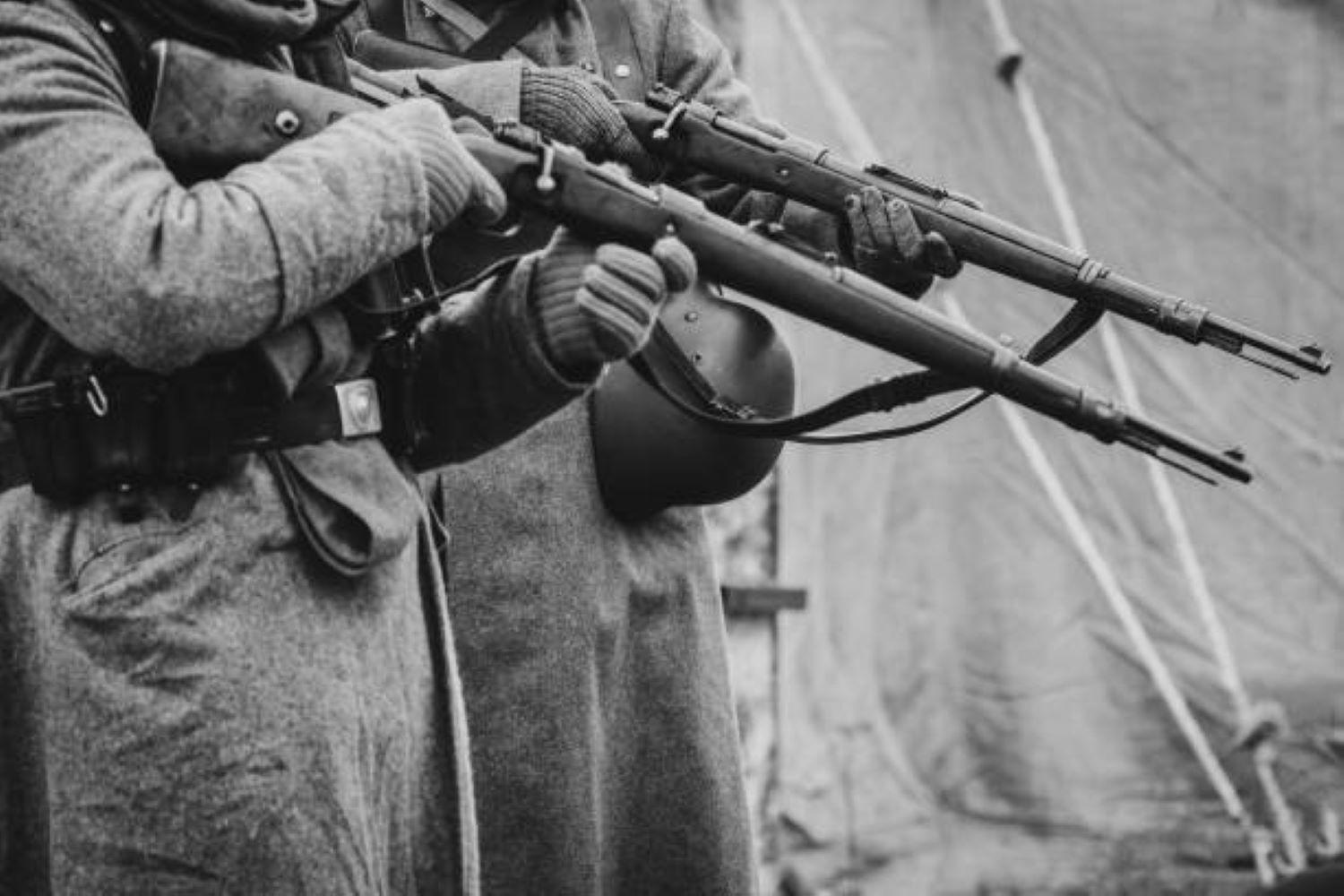
Battle of Britain and the Lend-Lease Act
The Battle of Britain, a pivotal air conflict, unfolded in the skies over the English Channel. The resilience of the British Royal Air Force against German aerial assaults became a symbol of defiance. Concurrently, the United States enacted the Lend-Lease Act, providing crucial support to Allied nations and laying the groundwork for its eventual entry into the war.
Pearl Harbor and the Pacific Theater
The Pacific Theater erupted into conflict with the surprise attack on Pearl Harbor in 1941. This catalytic event propelled the United States into a global war, marking a turning point in the Allied struggle. Battles across the vast expanse of the Pacific showcased the brutal nature of island-hopping campaigns and naval warfare.
D-Day and the Eastern Front
The turning tide came with the Allied invasion of Normandy on D-Day in 1944, a monumental operation that marked the beginning of the end for Axis forces in Western Europe. Simultaneously, the Eastern Front witnessed the relentless Soviet advance, culminating in the capture of Berlin in 1945. These events reshaped the contours of the war and set the stage for the post-war world order.
The tapestry of time, from the great depression to the Second World War, is a testament to the enduring human capacity to overcome trials and shape destiny. As we contemplate the lessons engraved in history, Superprof stands ready to offer insightful guidance through experienced tutors, aiding in the exploration and comprehension of complex historical narratives.

